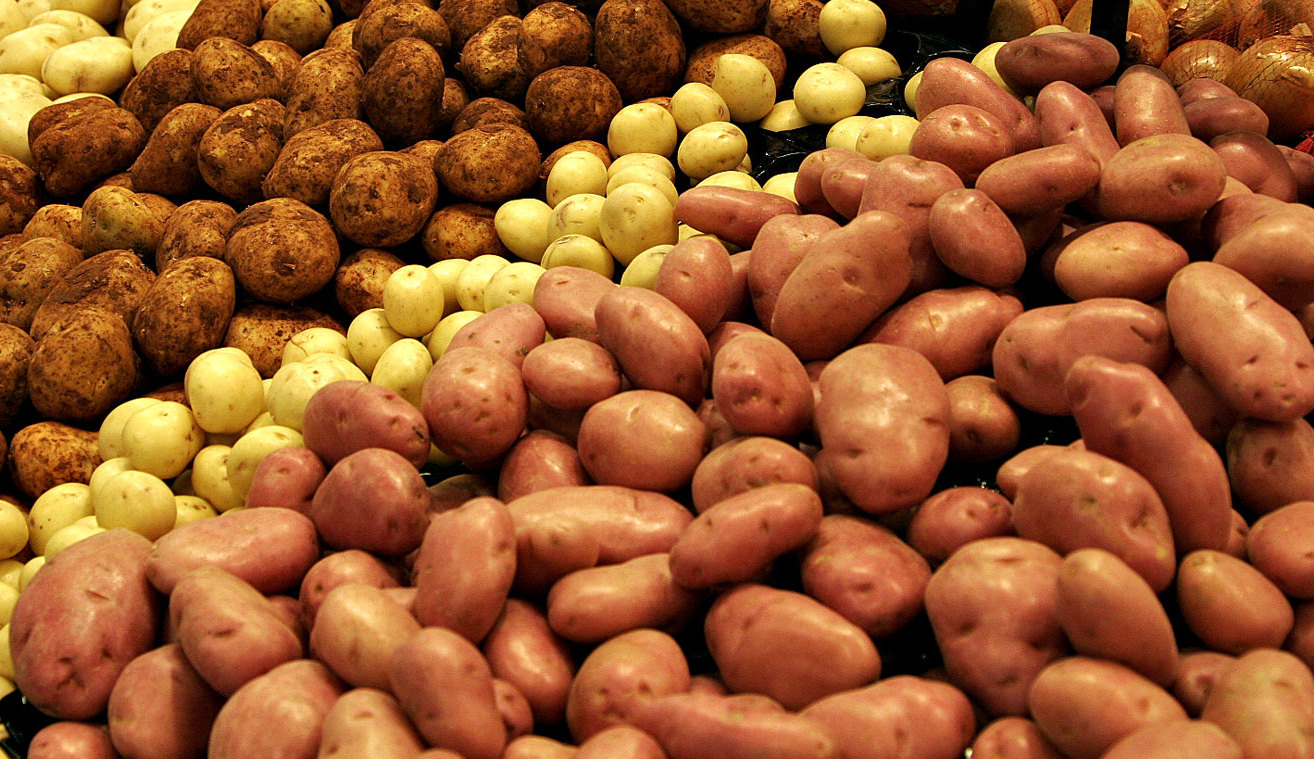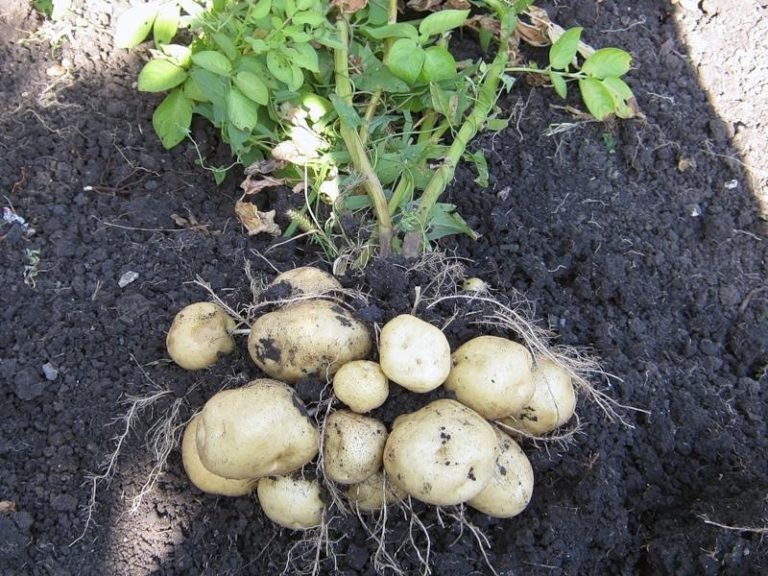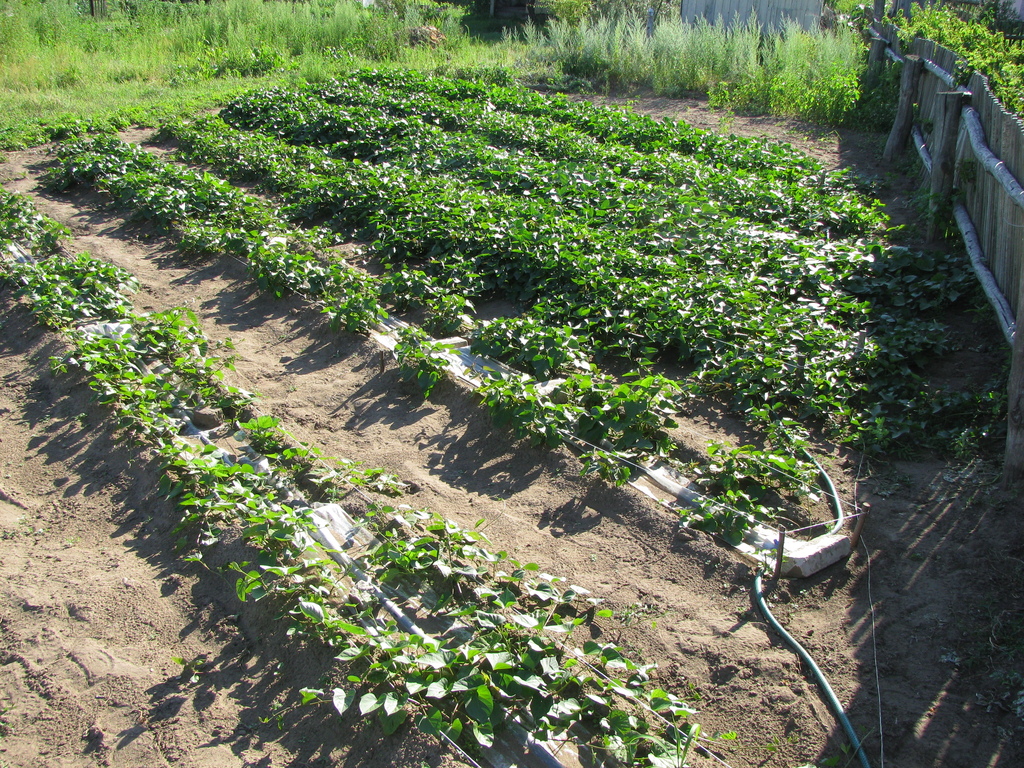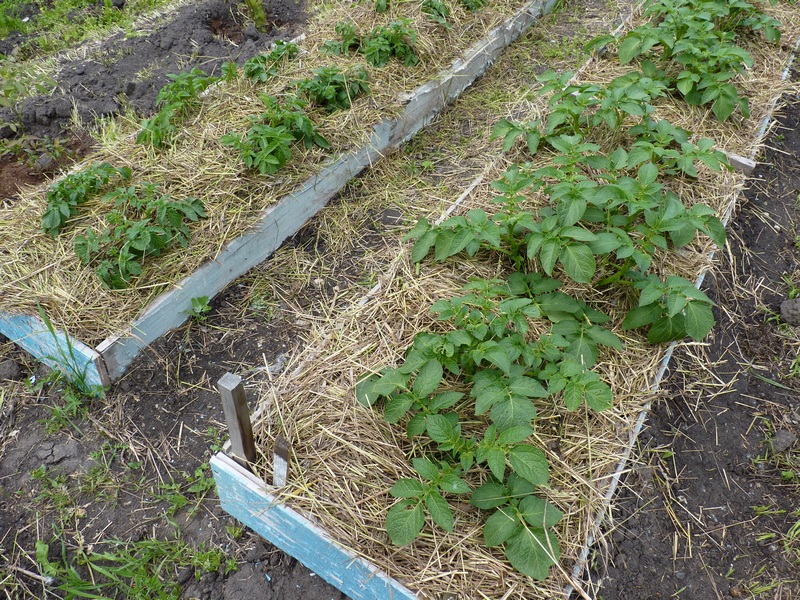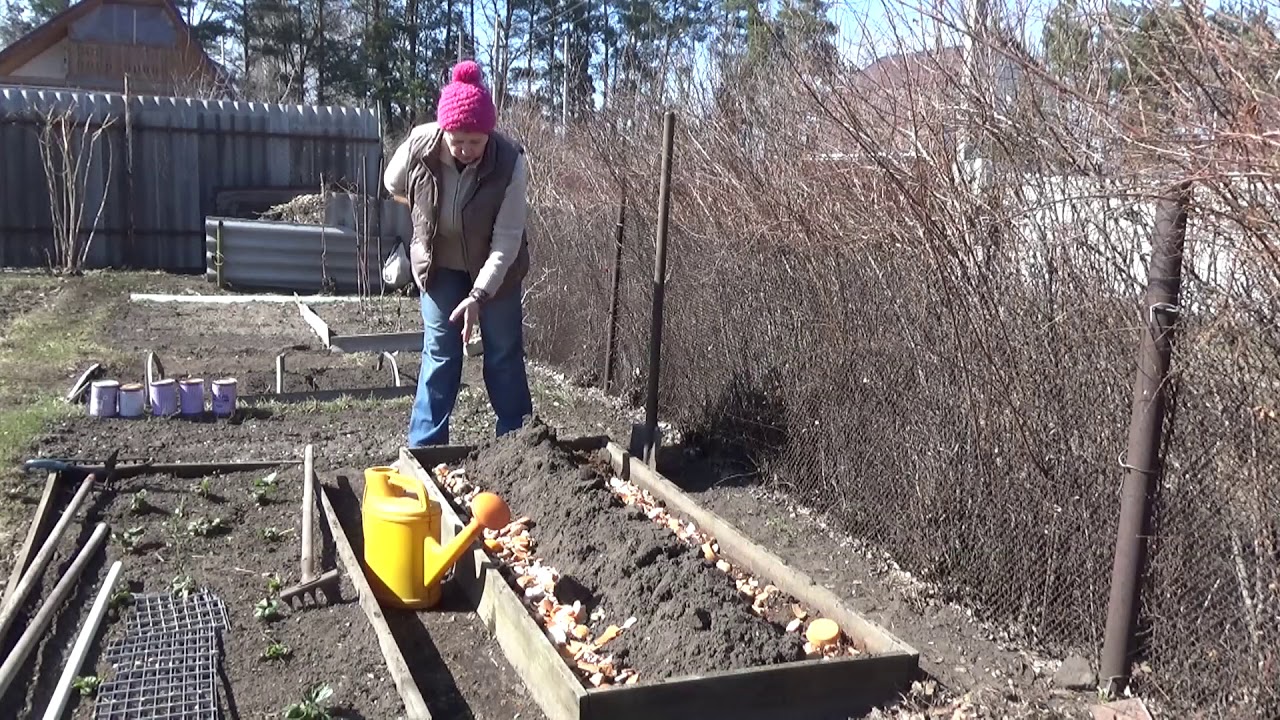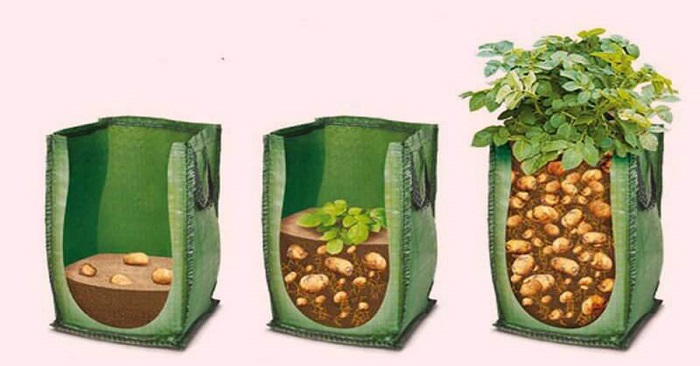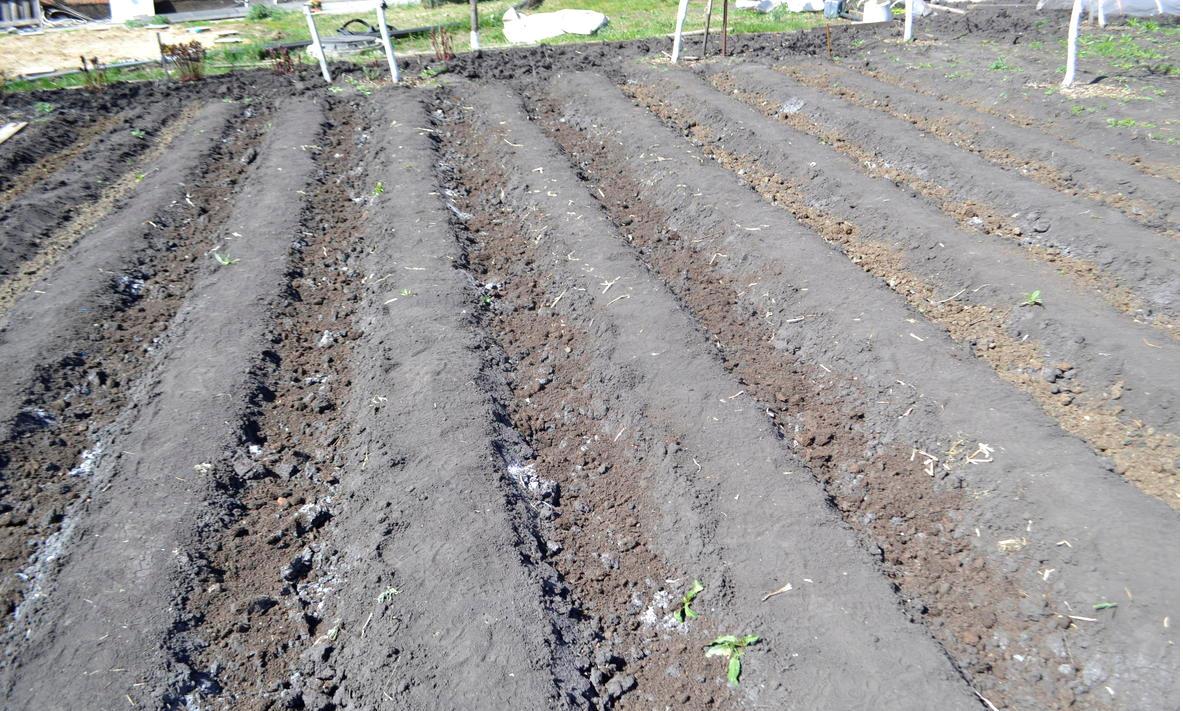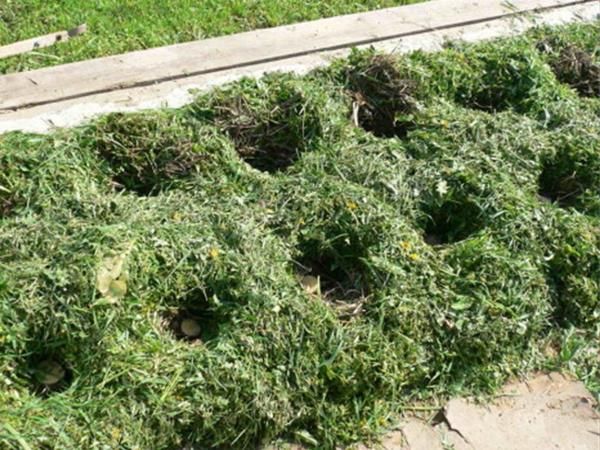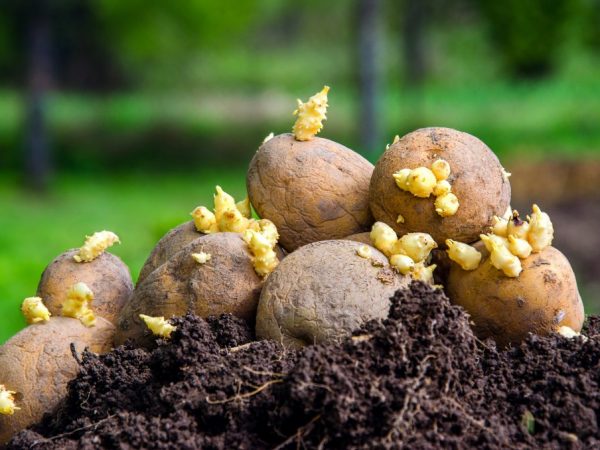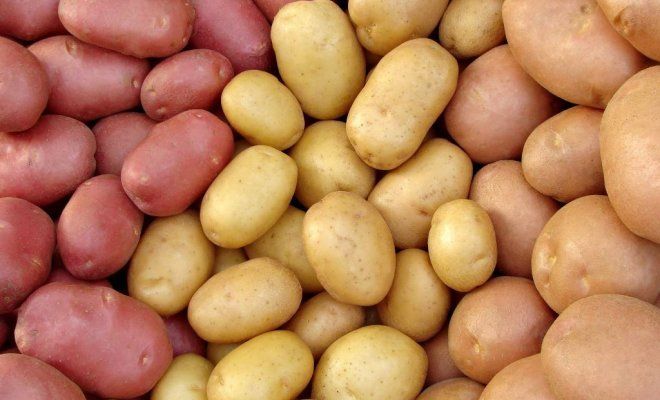Content:
Potatoes are a familiar product for our country. This plant has a universal character - it is used not only as a food and forage crop, but also as a technical one. As for the nutritional advantage of the crop, it lies in the high calorie content of potatoes.
Description of culture
The potato is a perennial plant preferred to be grown as an annual.
The plant is characterized by a renal root system, which penetrates into the soil to a relatively shallow depth (most of the rhizome remains in the arable layer).
The potato tuber, which is consumed as food, is a somewhat modified stem with eyes. At first glance, the position of the eyes may seem chaotic, but in reality they are placed in a spiral.
Ripe tubers have several layers:
- a peel that reliably protects the root crop from drying out and negative environmental influences;
- parenchyma with a high starch content;
- educational fabric.
In addition to the above, inside the potato there are vascular bundles that directly connect to the eyes. There are a large number of varieties of this culture, which differ not only in color and shape, but also in their taste characteristics.
The potato bush is distinguished by an erect stem, the height of which can vary from 30 to 150 cm. The inflorescences of the plant can have different colors, but are more often white. Flowers consist of 5-6 petals. Flowering begins a little more than a month after the first shoots. Potatoes are self-pollinated. The harvest (in direct proportion to the climatic characteristics of the planting region) begins to be harvested from mid-August. Landing in the soil is done in May.
Planting potatoes in the beds
Many of those who have a summer cottage prefer to plant potatoes in the beds. This planting method will be appreciated by any lazy gardener. The fact is that planting potatoes in ridges allows you to grow a root crop with minimal effort, because such potato cultivation allows you not to loosen the soil and hilling. The method of growing potatoes on ridges allows you to get an excellent harvest even on poor soils.
Other benefits include:
- ease of watering;
- saving space in the garden;
- a significant increase in productivity.
Narrow beds
The width of the potato beds can be different, but more often the cultivation of potatoes is done in narrow ridges. Before placing the planting material in the ground, the future potato bed must be carefully cleared of weeds. The better the weed is removed, the less effort will subsequently be required to weed.
The placement of the ridges should be planned well in advance. Then they will not change, which will allow not to dig up the space between the rows in the fall.
Important! Narrow potato ridges take up a third of the garden space.
The main features of the narrow ridges in which the landing will take place are as follows:
- size: length - about 10 m and width - 45 centimeters; such dimensions allow for a two-row method of planting potatoes;
- if you follow the order of watering and fertilizing, the culture will give a higher and more abundant harvest;
- in the southern regions, a narrow bed allows you to get two full harvests in one season.
Beds-boxes
Another way to plant potatoes in ridges is to use boxes.
This technology allows you to reliably protect the plant from cold weather and sudden temperature changes.
In order to make such a box, you will need:
- boards;
- nails;
- paint.
Council. Do not use slate as a base for boxes. In its production, asbestos is used, which negatively affects the soil.
Since a stationary box for planting potatoes is not made for one year, the wood requires additional paint or varnish treatment. If this is not done, organic natural material will quickly rot. Alternatively, you can burn the boards with a blowtorch or whitewash them with lime.
The length of the boxes is usually about 6 m, the width is 1 m, and the height is about half a meter. At the same time, the distance between the boxes should not be less than 60 cm. The box is filled with a bed traditionally: sand, peat, compost and sawdust.
Sprouted tubers are placed in a box in two rows, observing a checkerboard pattern. Then they are sprinkled with earth with a small amount of ash. Then mulch is laid (hay, sawdust or peat). Arcs are installed above the bed, onto which the film is stretched. In the process of growing in a box, potatoes require abundant watering (about twice a week). No additional fertilization is needed - everything you need to get a high yield is contained in the mulch.
Warm beds
In a harsh climate, so that the potatoes begin to turn white in time with their flowers and have time to ripen in a short summer, the crop is planted in warm beds. You can plant tubers as follows: a tablespoon of vermicompost and wood ash are placed in each hole, the cells themselves are staggered.
On a note. In the morning frost, the ridges with potatoes, when planting a warm version of the garden, should be additionally insulated with freshly cut grass or straw. Fresh cut grass without seeds can also be used.
In this case, humus, hay, spruce needles and tree bark can be used for mulching.
Vertical types of beds
For those who appreciate the most economical options for growing potatoes, a vertical planting scheme is optimal. It assumes that the potato head is placed in old barrels, bags or cans for planting. The method is best suited for use in small garden areas where the soil is not very fertile.
The container (bag or canister) must be convenient for transportation. In addition, it should be additionally equipped with holes. They are vital to ensure ventilation of the root system. Holes with a diameter of about 1 cm will be enough. Next, the container needs to be filled with a mixture of humus, soil, and peat. A sprouted or simply planted tuber or a part of it with a sufficient number of eyes during planting are laid sprouts upwards.
When the planting of tubers is complete, the plant needs to be watered abundantly. When the potato sprout reaches a height of 7 cm, the soil is poured to the level of the last leaves. The procedure should be continued until the volume of the container for planting is sufficient. The described procedure completely replaces hilling.
Furrow beds
The method of planting a potato crop in double furrow beds is quite curious.At the bottom, be sure to lay compost with ash, straw added to it, and only then the germinated tuber.
Often, when planting in such beds, potato tubers are used, which are cut in half or into several parts. In this case, the slicing is done in such a way that there are several eyes on each part of the potato.
Before planting potatoes, sprinkle the tubers with ash. This not only significantly accelerates the growth of stems and the root system, but also reduces the risk of plant disease with late blight.
Planting in double furrows is carried out in even rows at a distance of 30 to 35 cm from one another. In this case, a distance of about 20 cm should remain between the seedlings.
Whichever of the following methods of planting potatoes in the beds is chosen, about a month before harvesting, it is strongly recommended to make one plant feeding. For this, superphosphate and boric acid should be used. For 100 square meters, 6 kg of boric acid and 5 kg of superphosphate, diluted in water, are usually sufficient. Even if the potatoes were planted on fertile soils, the fertilization procedure can increase the yield by at least 10%, while simultaneously promoting the successful outflow of starch into the tubers from the tops.
Choosing a bed method of planting potatoes, you can forever forget about the walk-behind tractor and the need to plow the area for planting.
